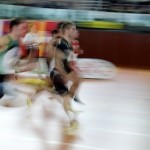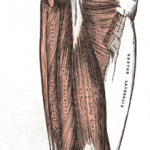When to allow an injured player to return to play is a dubious subject. Whilst the level of risk will vary, any time an injured player takes the field there is a clear and present danger of further damage. In the case of acute soft tissue injuries logic suggests that the principles of RICE and No HARM must be implemented and thus no further exercise that day. However, try telling the athlete and coaching staff that. There are times when the sports physiotherapist will stretch their boundaries when it comes to return to play, discussed here. Therefore, it is important to have an objective, clear and structured assessment to implement on the acutely injured player to assess their ability to return to play (RTP).
Below I loosely outline my upper limb injury return to play criteria and sideline assessment techniques. Whilst the assessment frequently differs for each specific injury, I hope this may stimulate thought on the way sports physiotherapists determine RTP capability.
DIAGNOSIS
This is probably the most important criteria. If you have a clear diagnosis of the athlete’s injury this will give the experienced sports physiotherapist a wealth of information on the athlete’s capacity to return to play. For example, Grade 1 ATFL tear versus Grade 3 ATFL and CFL rupture.
Diagnosis also becomes important in determining straight out whether you will allow the player to RTP, regardless of function. If there is a large risk of further damage to the injury, or the potential for catastrophic consequences, then the athlete should not be allowed to return to play. This is clearly evident in cases such as concussions and fractures.
PAIN
Subjective indicators are not good because they are just that, subjective. High levels of pain does not always equate to more serious pathology. However, if an athlete is in a lot of pain it is likely they will not want to RTP. Yet if they are insane, as many athletes are, some in high amounts of pain may wish to RTP. In this case, if the athlete can still function well I may allow them to take the field. However, frequently they cannot pass the functional tests when in high amounts of pain.
RANGE OF MOTION
The injured athlete must be able to obtain a functional range of motion (ROM). This is a broad term, but so is the world of sports physiotherapy. Accordingly, I do not use criteria like 90% ROM because this may mean nothing to the athlete. For example, an AFL footballer can play effectively with minimal 5th proximal inter-phalangeal ROM but likely needs 90% shoulder ROM to be functionally effective in taking overhead marks.
SKILLS
The athlete must be able to perform a few relevant skills. Whilst these will clearly differ for each sport, you may select a few of the most important. In rugby league, I generally use catching and passing.
FUNCTION
Now we start to get down and dirty. Functional testing is where you will expose the majority of the athletes weaknesses, and therefore where the majority of athletes will fail the RTP criteria. The majority of the athletes I work with play rugby league, a heavy contact sport (check out the video for examples), which means my functional testing is quite physical. Before I allow the athlete to return to play they must pass these tests:
Single Hand Grip: the athlete must grab my wrist, and not allow me to pull away. This is particularly pertinent in hand, wrist and forearm injuries.
Push-Ups: generally the athlete must be able to perform 10 push ups, however, you must make this relevant to your athletic population.
Fend: the athlete must be able to fend me off as I attempt to tackle them. Of course, you can use another player to attempt the tackle if you wish (its probably safer from a OHS perspective).
Grapple/Pummel/Wrestle: this is a common drill in rugby league circles. The athlete must be able to confidently wrestle with me (or another player) and effectively take me down to the ground.
Tackle: generally I grab a “bump pad” and they must put a hit on/tackle me (definitely choose another player for this one).
THE PHYSICALITY OF RUGBY LEAGUE
YOU’RE IN THE CLEAR
As you can see, if the athlete passes these criteria it is more likely that they will be able to handle the intensity of the game. This is more objective than just asking “do you reckon you will be right”. Whilst it may seem quite involved, after the diagnosis, the entire process generally takes about one minute.
Whilst you do not need to follow the return to play assessment discussed here, there is no doubt you do need an objective and structured sideline assessment. If you do not, you will be ineffective and disorganised, and eventually send players back on the field who should not be out there. Inevitably, this will reflect poorly on you and your clinical reasoning.
What would/do you do differently? Comment here or catch me on Twitter or Facebook.
Related Posts









